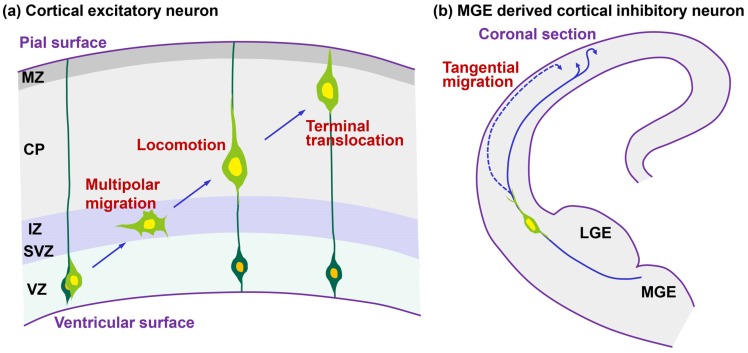Figure 1.
Migration mode and morphological changes of migrating neurons. (a) Cortical excitatory projection neurons (light green cells) are mainly generated in the ventricular zone (VZ) and transform into multipolar cells in the lower part of intermediate zone (IZ) or the subventricular zone (SVZ). Subsequently, these neurons transform into locomoting cells with a leading process in the upper part of the IZ. Locomoting cells migrate along the radial fibers of their progenitors (dark green cells) in the cortical plate (CP), and at the final term of locomotion, they contact the pial surface with the tip of the leading processes and translocate their nuclei (terminal translocation mode); (b) Cortical inhibitory interneurons are mainly born in the medial ganglionic eminence (MGE) and migrate tangentially through the cortex. There are three migration routes of cortical interneurons: (1) neurons migrate from the SVZ to the marginal zone (MZ) and after exhibiting non-directional movement in the MZ, they migrate into the CP, (2) neurons migrate from the SVZ to the CP, and (3) neurons directly migrate from the MGE to the MZ and subsequently migrate into the CP. Although the third route might be rare in vivo, it is frequently observed in the slice culture. LGE: lateral ganglionic eminence.

